Abstract
Domestic animals share our environment in a variety of ways. One of these ways is as companions in and around our homes. Although a wide variety of species are kept in households for this purpose, the great majority are dogs and cats. Sharing our environment with such animals has a profound effect on the health of the humans concerned. As keeping companion animals is a very widespread activity, about 50% of all households in the Western world have some sort of animal, the effects are far reaching.
Full text
PDF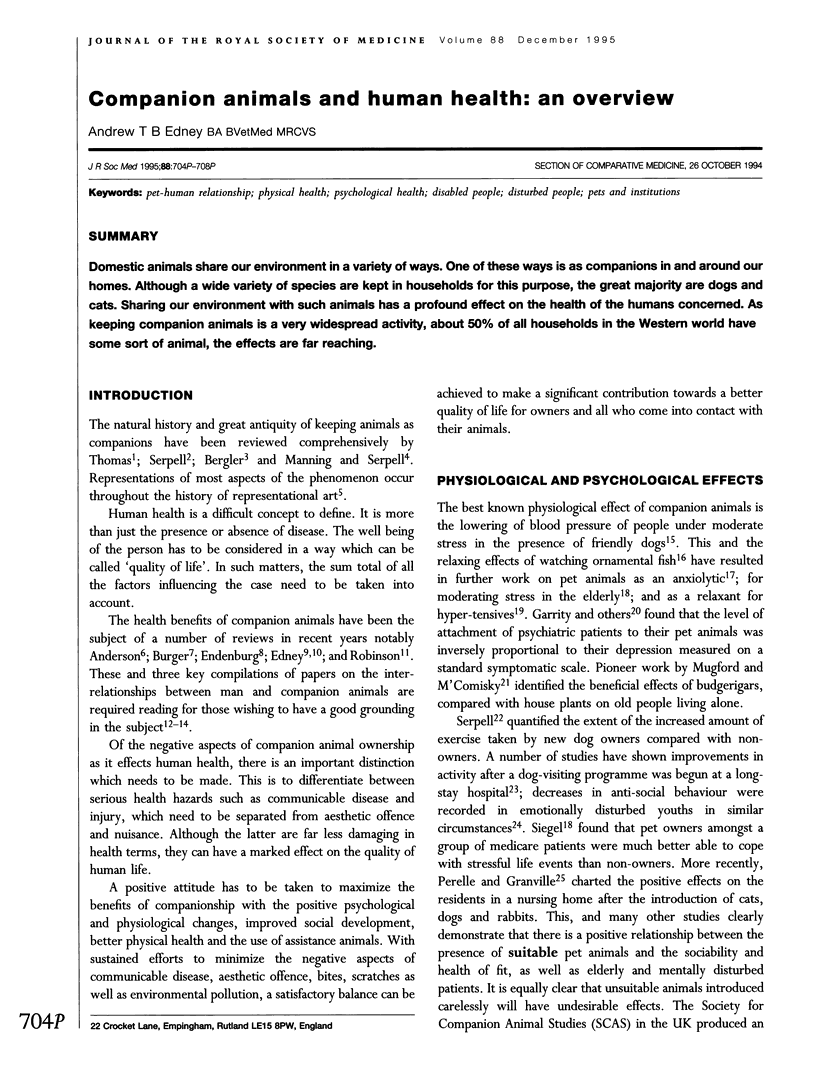
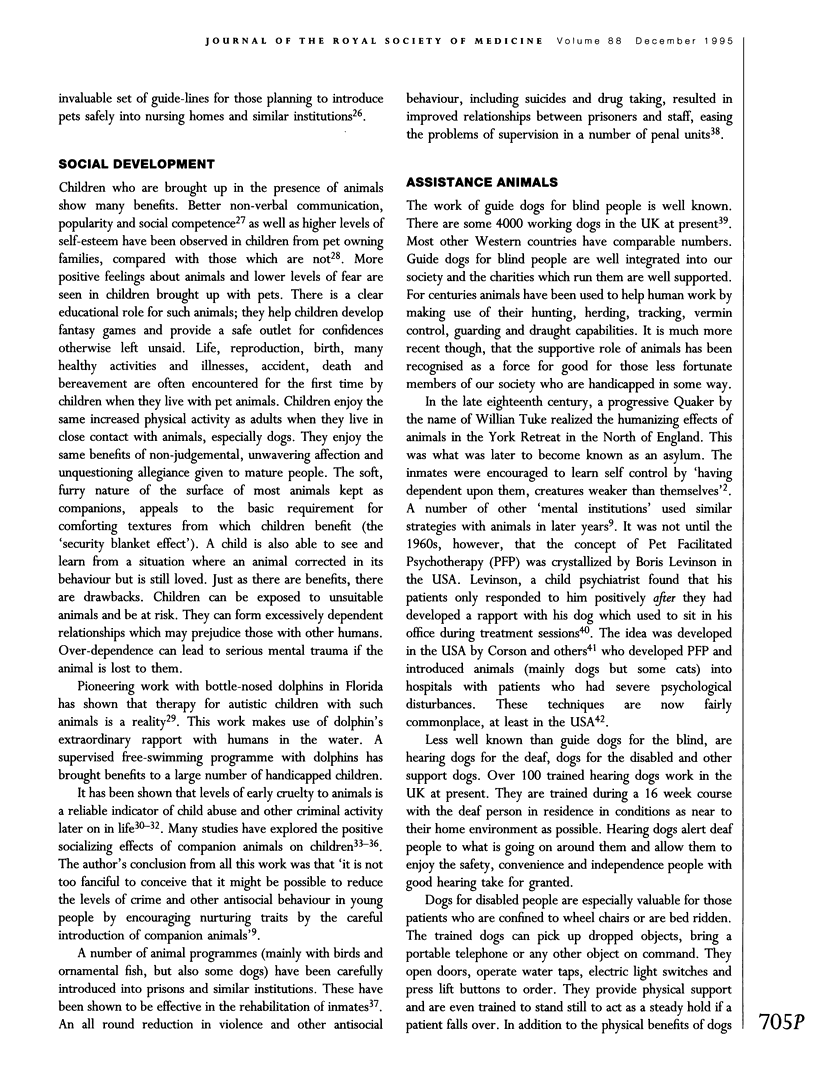
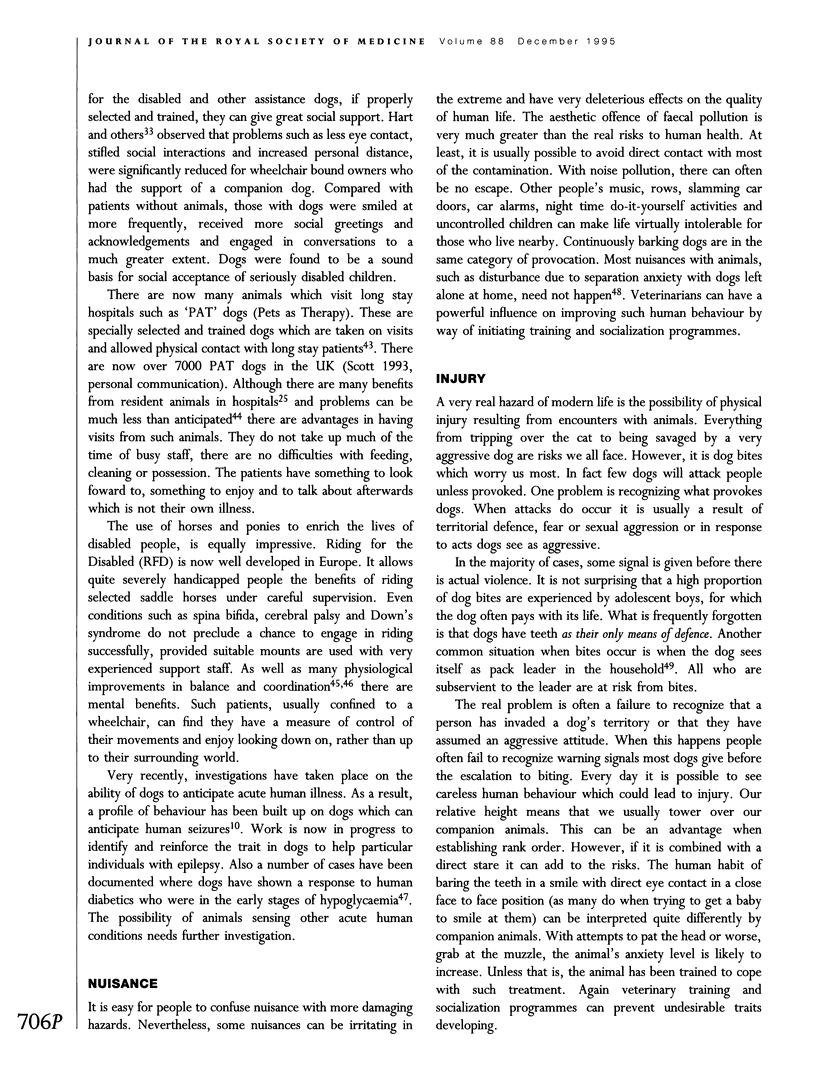
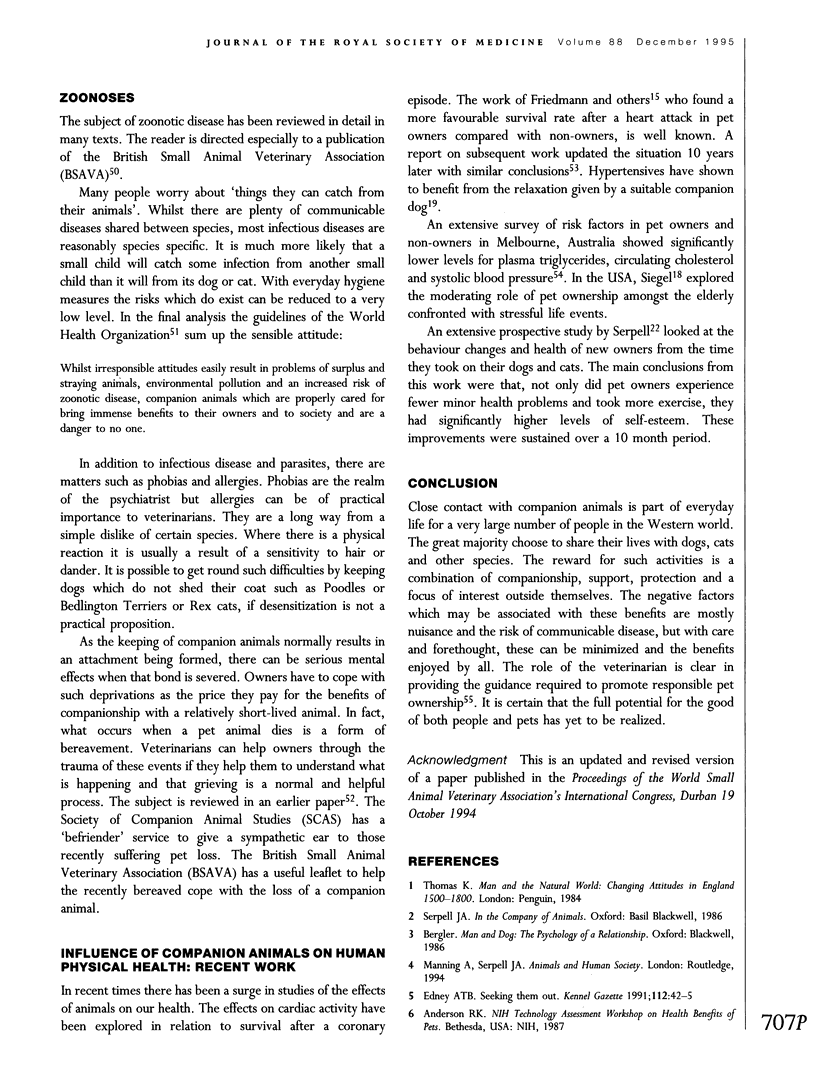
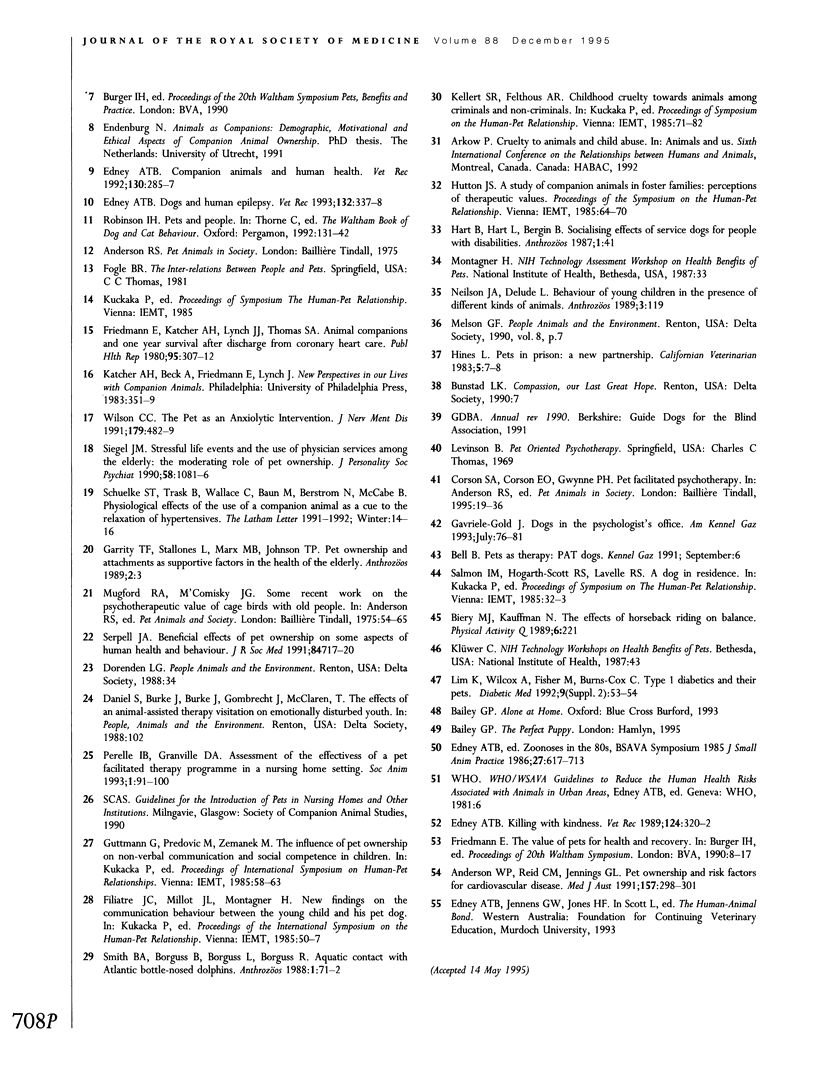
Selected References
These references are in PubMed. This may not be the complete list of references from this article.
- Anderson W. P., Reid C. M., Jennings G. L. Pet ownership and risk factors for cardiovascular disease. Med J Aust. 1992 Sep 7;157(5):298–301. [PubMed] [Google Scholar]
- Edney A. T. Companion animals and human health. Vet Rec. 1992 Apr 4;130(14):285–287. doi: 10.1136/vr.130.14.285. [DOI] [PubMed] [Google Scholar]
- Edney A. T. Dogs and human epilepsy. Vet Rec. 1993 Apr 3;132(14):337–338. doi: 10.1136/vr.132.14.337. [DOI] [PubMed] [Google Scholar]
- Edney A. T. Killing with kindness. Vet Rec. 1989 Apr 1;124(13):320–322. doi: 10.1136/vr.124.13.320. [DOI] [PubMed] [Google Scholar]
- Friedmann E., Katcher A. H., Lynch J. J., Thomas S. A. Animal companions and one-year survival of patients after discharge from a coronary care unit. Public Health Rep. 1980 Jul-Aug;95(4):307–312. [PMC free article] [PubMed] [Google Scholar]
- Siegel J. M. Stressful life events and use of physician services among the elderly: the moderating role of pet ownership. J Pers Soc Psychol. 1990 Jun;58(6):1081–1086. doi: 10.1037//0022-3514.58.6.1081. [DOI] [PubMed] [Google Scholar]
- Wilson C. C. The pet as an anxiolytic intervention. J Nerv Ment Dis. 1991 Aug;179(8):482–489. doi: 10.1097/00005053-199108000-00006. [DOI] [PubMed] [Google Scholar]


